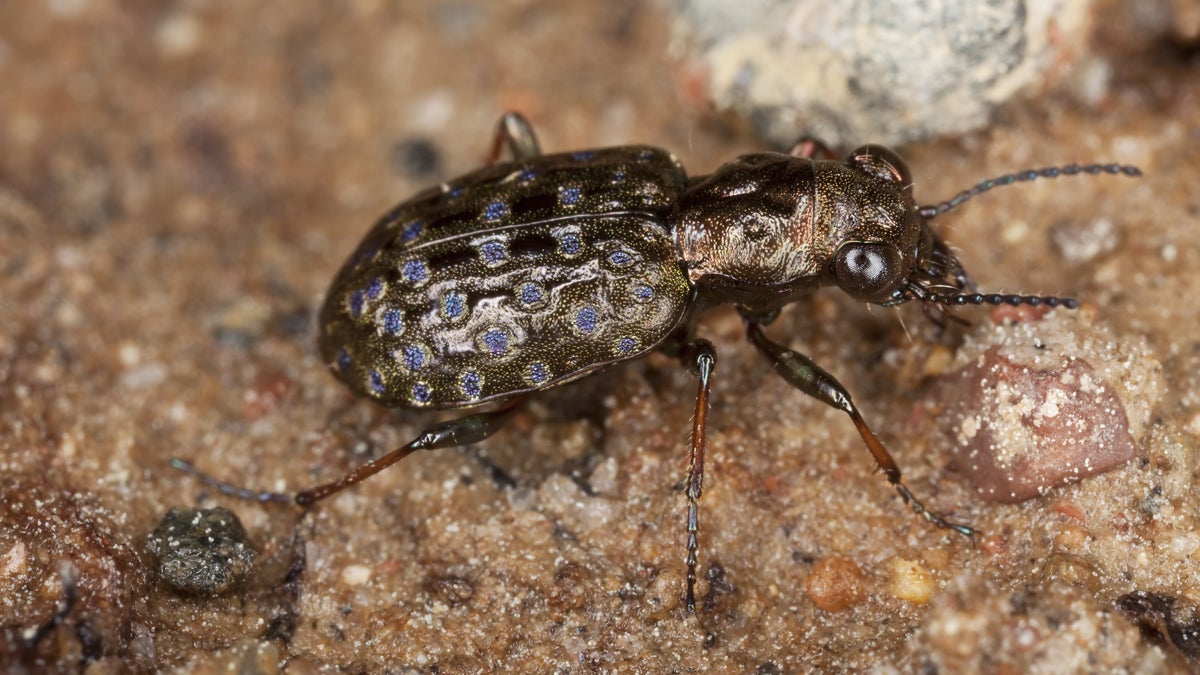Beetles aid Drexel researcher in monitoring stream health
Listen Photo via ShutterStock)" title="beetle1200" width="1" height="1"/>
Photo via ShutterStock)" title="beetle1200" width="1" height="1"/>
(Photo via ShutterStock)
Environmental scientists are looking for help locating the Elaphrus beetle, a type of ‘indicator species’ in our region.
Environmental scientists use the presence or absence of certain organisms to measure the health of an ecosystem. They’re called “indicator species.” So when you’re looking for one of them across a large region, it makes sense that more people would make the search go faster and be more thorough.
Dan Duran, assistant professor in Drexel University’s Department of Biodiversity, Earth and Environmental Science, has just embarked on a search for one of those indicator species. The marsh ground beetle, which also goes by the Latin name for its genus, Elaphrus, is found along muddy stream banks in temperate regions like ours. Duran says it’s an effective indicator species because it’s adversely affected by run-off, like road salts and agricultural chemicals–that make it into a stream without being visible.
“I’ve gone to places where the habitat looks perfect–the right kind of streamside area, the mud looks right–and they’re not there,” said Duran. “And the site is really close to major interstates where probably the stuff that runs off that road every single day, is going to have an impact on them. So if that’s true, that these various chemicals are doing this to that beetle, the question is, what else is happening too? So it’s your mine canary. It’s your thing that says, oh, there’s a problem before other things say that.”
Duran’s goals are to chart where Elaphrus is found in the waterways of the Philadelphia region, and to track changes to their range over time. But ours is a watery habitat, so how will it play out – one researcher vs. how many hundreds of streams?
The answer, of course, is citizen scientists.
“Because I can’t be everywhere,” he admits. “I would love to have 50 sites within a county or two of Philadelphia. And all these people who are out there who are interested in nature could go and find them.”
It’s a pleasant task he’s suggesting. In their native environment, Elaphrus blends into the surroundings very well, so seekers need to spend a little quiet time in the great outdoors. “One of my friends calls it Zen collecting,” Duran explains. “You just sit still for a minute. A few times I’ve found them, I was kind of tired, I sat down to rest and all of a sudden, I noticed the ground moving, and I saw them. You slow yourself down a little bit, and then they’re there.”
Eventually Dan Duran will have a website for citizen scientists to submit their findings. For now, you can email him to join the study. For information on other citizen science opportunities in our region, go to scistarter.com.
WHYY is your source for fact-based, in-depth journalism and information. As a nonprofit organization, we rely on financial support from readers like you. Please give today.



